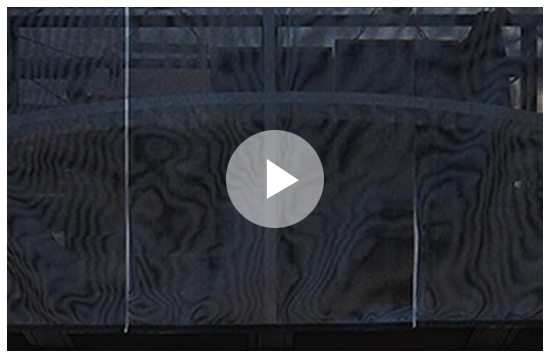-

Atelier Bow-Wow’s BMW Guggenheim Lab
Photo: Christian Richters, © 2012 Solomon R. Guggenheim Foundation
-
Atelier Bow-Wow is a Tokyo-based architecture firm founded in 1992 by Yoshiharu Tsukamoto and Momoyo Kajima. They are well known for their domestic and cultural architecture and research exploring the urban conditions of micro and ad-hoc architecture.
The BMW Guggenheim Lab: a partnership between a major corporation, a corporatized arts institution, and an architecture office, billed as an “urban think tank and global laboratory” for “sharing ideas and practical solutions.”
Following its grand opening in NYC in 2011, the Lab began a tour of nine cities over the course of six years, swapping themes every two years. The theme for its first three-city cycle was called Confronting Comfort, and so far NYC, Berlin, and Mumbai have been “comforted” by its mix of programming put on by a rotating crew of invited international practitioners. The custom-built tank-for-thinking-in is a transportable carbon fibre structure designed by Tokyo-based architects Atelier Bow-Wow. Surprisingly, it’s first building whose structure is entirely made of this material.
Over the course of its six-year romp around the globe, the physical structure will adjust to fit its circumstances, according to Bow-Wow’s long-standing precedent of creating buildings to fit existing – often tiny or dense – urban spaces. The Lab’s lower level is an open space for lectures, workshops, and exhibitions, and its upper half consists of a flexible rigging system coated in semitransparent, shimmering fibre mesh, allowing viewers to glimpse the internal mechanisms by which it transforms.
Yet as the initiative’s first two years have indicated, even the most sensitive, customizable architecture may not be appropriate to “insert” into any context – site-specificity is not only about the flexibility of the architecture, but of the programming it contains. While Manhattanites may be relatively immune to question of cultural gentrification, the public in Berlin and Mumbai have understandably been more suspicious of its short-lived, alien presence.
Apparently a see-through façade made of environmentally-sensitive material still signifies ethical transparency, but in light of the Guggenheim’s semi-shady franchising in Abu Dhabi, for instance, the fancy carbon fibre façade comes across as more distracting than revealing. This innovative use of carbon fibre mesh unfortunately houses a confusing weave of public and private interests: sturdy in terms of branding, lightweight in terms of cultural impact, and with false-transparency of intent. (ew)
-

Video: edited by Veena Rao, © 2011 The Solomon R. Guggenheim Foundation
Photo: Paul Warchol, © 2011 Solomon R. Guggenheim Foundation
-
Search
-
FIND PRODUCTS
PRODUCT GROUP
- Building Materials
- Building Panels
- Building technology
- Façade
- Fittings
- Heating, Cooling, Ventilation
- Interior
- Roof
- Sanitary facilities
MANUFACTURER
- 3A Composites
- Alape
- Armstrong
- Caparol
- Eternit
- FSB
- Gira
- Hagemeister
- JUNG
- Kaldewei
- Lamberts
- Leicht
- Solarlux
- Steininger Designers
- Stiebel Eltron
- Velux
- Warema
- Wilkhahn
-
Follow Us
Tumblr
New and existing Tumblr users can connect with uncube and share our visual diary.
»What the map cuts up, the story cuts across.«
Michel de Certeau: Spatial Stories
Keyboard Shortcuts
- Supermenu
- Skip Articles
- Turn Pages
- Contents


